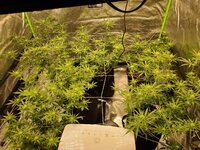ridefas78
Well-Known Member
i'm sorry for asking all these dumb n stupid questions that i'm sure have been asked before. my local hydro store stocks fox farms products, so i picked up some of the sledgehammer. how to properly flush do i need to remove my plants from my tent to have a constant flush or do you just water the plants like you would during feeding?




 .
.
